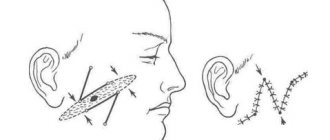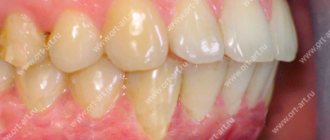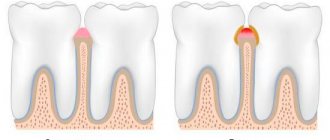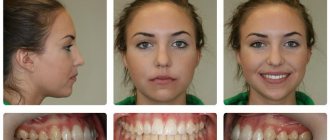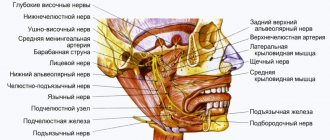What is it and how to treat it?
Osteomyelitis is an inflammation of the bone marrow with a tendency to progress.
This is what distinguishes it from the widespread dentoalveolar abscess, dry socket, and osteitis seen in infected fractures. Osteomyelitis affects adjacent cortical plates and often periosteal tissues. In the era of preantibiotics, osteomyelitis of the mandible was not uncommon. With the advent of antibiotics, the disease began to be detected less frequently. But in recent years, antimicrobial drugs have become less effective, and the disease has reappeared.
Osteomyelitis - what kind of disease
Osteomyelitis of the jaw is an infectious and inflammatory process characterized by spread to the bone tissue of the jaw and bone marrow. When a purulent process occurs, the disease turns into the form of necrosis.
The exact etiology of the disease has not been determined. Pathology occurs when a pathogen is active, which can be either an internal infection present in a healthy body or an infection that has penetrated from the outside.
Osteomyelitis has symptoms:
- fever, weakness, chills;
- mobility of teeth in the area of infected bone;
- formation of fistulas on the gums and face in the jaw area;
- pain in the affected area;
- restriction of jaw movement;
- inflammation of the soft tissues on the face.
Depending on the form of the disease, signs of damage may have specific manifestations.
Treatment of osteomyelitis involves detoxification and anti-inflammatory therapy, elimination of the purulent process by drainage, removal of affected tissues and teeth.
Osteomyelitis of the jaw. Causes
In the maxillofacial region, osteomyelitis occurs mainly as a result of the continuous spread of odontogenic infections or as a result of trauma. Primary hematogenous osteomyelitis in the maxillofacial region is rare, usually in very young people. Thus, osteomyelitis of the jaw occurs after tooth extraction, root canal treatment, or with fractures of the upper or lower jaw. This initial lesion leads to an inflammatory process caused by bacteria.
The incidence of osteomyelitis is much higher in the mandible due to the dense, poorly vascularized cortical plates and blood supply. Osteomyelitis of the maxilla is much less common due to the excellent blood supply from several feeding vessels. In addition, the maxillary bone is less dense than the mandibular bone.
Reduced patient protection, both local and systemic, may significantly contribute to the development of osteomyelitis. Osteomyelitis can be associated with a variety of systemic diseases, including diabetes, autoimmune conditions, malignancies, malnutrition, and acquired immunodeficiency syndrome. Medicines associated with the risk of osteomyelitis: steroids, chemotherapy drugs, bisphosphonates. Radiation therapy (causes so-called radiation osteomyelitis of the jaw), osteoporosis and bone pathology can change the blood supply to this area and become a potential springboard for the development of osteomyelitis.
Consequences of the disease and methods of recovery
Suffered purulent inflammation of the jaw in acute or chronic form often has serious consequences that negatively affect the quality of life.
- Often, surgical intervention during the treatment of a disease is accompanied by the removal of one or more elements of the dentition. As a result, the patient has to subsequently contact an orthodontist and undergo prosthetics.
- In many cases, infection of soft tissues causes scar deformation. This complex cosmetic problem can be corrected using plastic surgery methods.
- Septic conditions, which can develop against the background of the underlying pathology, can disrupt the full functioning of internal organs and negatively affect the functioning of the immune system and hematopoiesis.
- Severe bone lesions can change the natural shape of the jaw. This is not only a cosmetic problem, but also negatively affects the efficiency of the maxillofacial apparatus.
- Infection of a joint can lead to arthritis or arthrosis. This often leads to the formation of ankylosis and significant impairment of jaw mobility.
- Damage to the pathology of the upper jaw can affect the zygomatic bone and orbit with the further appearance of phlegmon or an abscess of the eyeball. Ultimately, the patient loses vision and it is no longer possible to restore it.
In some cases, the recovery period after osteomyelitis of the jaw is several years. All patients are monitored at the dispensary until all emerging violations are eliminated.
Rehabilitation involves the following procedures:
- application of physiotherapy methods;
- performing surgery for medical or cosmetic reasons;
- prosthetics of removed elements of the dentition (if necessary);
- preventive measures to avoid recurrence of the problem.
Osteomyelitis of the jaw. Symptoms
Like any infection of the maxillofacial area, osteomyelitis of the lower jaw and osteomyelitis of the upper jaw are accompanied by symptoms:
- pain
- swelling and redness on the surface of the skin
- adenopathy
- heat
- paresthesia of the inferior alveolar nerve
- lockjaw
- malaise
- fistulas
Pain from osteomyelitis is often described as deep and aching, which often does not correspond to the clinical picture.
In acute osteomyelitis, swelling and erythema of the overlying tissues are very often observed, which indicate the initial phase of the inflammatory process in the underlying bone.
Fever often accompanies acute osteomyelitis, whereas it is relatively rare in chronic osteomyelitis.
Inferior alveolar nerve paresthesia is a classic sign of pressure on the inferior alveolar nerve as a result of an inflammatory process in the bone marrow of the mandible.
Trismus may be present due to an inflammatory reaction in the muscles of mastication.
The patient usually experiences malaise or a feeling of general weakness, which can accompany any systemic infection.
Finally, both intraoral and extraoral fistulas are usually present in the chronic phase of maxillofacial osteomyelitis.
Complications
If you see a doctor in time, make a diagnosis and choose the right treatment, the prognosis will be favorable.
If you ignore all the conditions, complications will arise:
- Meningitis
- Abscess of the brain and lung.
- Orbital phlegmon.
- Sinusitis.
- Vein thrombophlebitis.
- Sepsis.
- Mediastinitis.
Pathological data require immediate assistance to prevent death.
The chronic process, with its long course, affects the soft tissue and bone areas of the maxillofacial area, and is accompanied by:
- traumatization;
- changes in the TMJ;
- the formation of adhesions in the joints and scars on the masticatory muscles;
Such disorders limit chewing movements or lead to immobility.
Osteomyelitis of the jaw. Diagnostics
Patients are often given laboratory tests as part of their initial evaluation. In the acute phase of osteomyelitis, leukocytosis with a shift to the left is often observed, which is typical for any acute infection. But leukocytosis is relatively rare in the chronic phases of osteomyelitis.
The patient may also have an elevated erythrocyte sedimentation rate (ESR) and C-reactive protein (CRP). Both ESR and CRP are very sensitive. Almost all patients will undergo maxillofacial imaging.
Computed tomography (CT) has become the standard of care in the evaluation of maxillofacial pathology such as osteomyelitis. It provides a three-dimensional image. CT can provide very detailed images of early cortical bone erosion in osteomyelitis. Often, along with pathological fractures, you can see the degree of damage and bone sequestration. CT scanning, like conventional X-ray examination, shows changes when bone demineralization reaches 30 to 50%, which significantly delays the diagnosis of osteomyelitis. Magnetic resonance imaging (MRI) is generally considered more valuable in assessing soft tissue lesions in the maxillofacial region. However, MRI can help in the early diagnosis of osteomyelitis. Thus, MRI can help in identifying the early stages of osteomyelitis.
Provoking factors
For the development of osteomyelitis, the presence of only reasons is not enough. The infection begins to actively “attack” the bone tissue of the jaw under the influence of provoking factors. The main condition for the occurrence of a pathological process is immunodeficiency. A weakened immune system is unable to resist bacteria, which leads to tissue damage.
Other factors that reduce immunity can also provoke osteomyelitis:
- bad habits (alcoholism, smoking);
- diabetes;
- immunodeficiency diseases;
- poor nutrition, diet, fasting;
- oncological diseases.
In the absence of treatment or incomplete therapy, chronic osteomyelitis of the jaw develops. The chronic form of the disease is difficult to treat and provokes serious complications.
Osteomyelitis of the jaw. Treatment
The first step in treating osteomyelitis is to correctly diagnose the condition. A preliminary diagnosis is made based on clinical assessment and radiological examination.
Treatment of osteomyelitis of the maxillofacial region requires both conservative and surgical methods. In later stages, antibiotic therapy is rarely effective, so the vast majority of cases of osteomyelitis require surgery.
For osteomyelitis of the upper or osteomyelitis of the lower jaw, as a rule, classical treatment is used - sequestrectomy. The goal is to remove necrotic or poorly vascularized bone sequestration in the infected area and improve blood flow. Sequestrectomy involves removing infected and avascular pieces of bone—usually cortical plates—in the infected area. Visual assessment is critical at these stages, but radiation diagnostics, which shows the osseous extent of the pathology, also helps. It is often necessary to remove teeth adjacent to the area of necrosis.
Supporting the weakened area with a fixation device (external fixator or reconstruction plate) is often used to prevent pathological fracture.
Why does it occur
Most often, doctors deal with odontogenic disorders. It can develop against the background of:
- advanced caries;
- pulpitis;
- pericoronitis;
- periodontitis;
- tooth root fracture;
- granulomas;
- dental cyst.
The infection first spreads in the pulp, then passes through the root and reaches the jaw.
The hematogenous form of the disease is a consequence of the ingress of bacteria from boils and carbuncles of the jaw area. This type of osteomyelitis can also be caused by:
- sepsis;
- otitis;
- sinusitis;
- tonsillitis;
- scarlet fever;
- diphtheria.
A hematogenous disorder always follows this scenario - first the jaw bone becomes inflamed, and only then some of the teeth begin to hurt.
Jaw osteomyelitis of a traumatic nature is the result of fractures, bruises, injuries, and wounds. In all these cases, pathogens enter deep bone tissue from the environment.
If you take a sample of the causative agent of dental osteomyelitis for study, you can get unexpected results. It turns out that the culprits of the disease may be:
- staphylococci;
- streptococci;
- coli;
- proteas;
- Pseudomonas aeruginosa;
- Klebsiella, etc.
How quickly the disease progresses depends on the state of a person’s general and local immunity. It is tolerated worse by people who have concomitant pathologies such as:
- oncology;
- diabetes;
- rheumatism;
- hepatitis;
- polyarthritis;
- blood poisoning.


